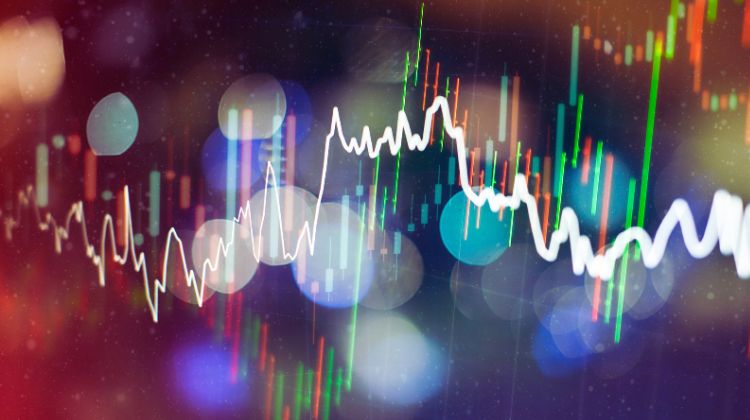
Imagine receiving regular income from your investments. That’s what a dividend yield represents—a way for your investments to pay you back. You might have heard seasoned investors mention the term “dividend yield” but what does it really mean, and why should it matter to you? This comprehensive guide will discuss the ins and outs of dividend yield, including its calculation, advantages and disadvantages, and ultimately answer the question: “What’s considered a good dividend yield?”
Table of Contents:
- Understanding Dividend Yield
- Calculating Dividend Yield
- Factors Affecting Dividend Yield
- The Appeal of Dividend Yield
- High vs. Low Dividend Yields – The Delicate Balance
- Why Companies Pay Dividends: A Glimpse Into Their Strategy
- Dividend Yield and Investment Horizon: Finding the Right Fit
- Looking Beyond Dividend Yield: A Well-Rounded Approach to Investing
- FAQs about dividend yield
- Conclusion
Understanding Dividend Yield
A dividend yield is a financial ratio that shows the annual dividend payment as a percentage of a company’s current share price. It gives you a quick idea of how much return you can expect from dividend payouts relative to your stock purchase. Think of it like comparing the rent you receive on a property to its purchase price. It’s a good starting point for income-oriented investors or those seeking consistent returns in addition to potential stock price growth.
Calculating Dividend Yield
Calculating a stock’s dividend yield is straightforward. You can use the following formula:
Dividend Yield = (Annual Dividend per Share / Current Share Price) x 100
For example, let’s say Company XYZ’s annual dividend payout per share is $2 and its current stock price is $50. The dividend yield would be: ($2 / $50) x 100 = 4%.
This means that for every $100 invested in Company XYZ, you would receive $4 in annual dividends.
Factors Affecting Dividend Yield
Remember that a company’s dividend yield can fluctuate due to several factors:
- Changes in Dividend Payout: When a company changes its dividend payouts, the yield will also change. This can be a red flag, especially when a company experiences a stock price decline. In these situations, they sometimes avoid cutting the dividend for fear of causing a further decline, which can mislead investors who depend solely on dividend yield for their analysis. Factors like missed earnings or shifting market sentiment could also lead to this.
- Decline in Stock Price: A rising yield may seem good for investors. However, if that rise is driven by a falling stock price, it could signal problems with the company’s performance. For example, a company that unexpectedly cuts its dividend often experiences a decline in its stock price. When this happens, the dividend yield will rise, potentially misleading investors to believe they’re getting a higher return.
The Appeal of Dividend Yield
There are advantages to receiving dividend payments. Let’s look at why dividend yield is a valuable metric for investors:
- Consistent Income: Dividend yield offers investors a source of passive income. This can be useful for retirees seeking to supplement their income. For example, if you had a portfolio generating a 5% dividend yield, you’d receive $5,000 annually on a $100,000 investment. High dividend stocks and ETFs are often targeted by investors who want to shift their portfolios toward income generation rather than solely relying on capital appreciation.
- Potential Hedge Against Inflation: When inflation rises, the value of money decreases over time. Dividend payments that increase can protect your investments and help maintain your purchasing power. As companies grow, they may increase their dividend payouts. This helps investors stay ahead of inflation. This is because the income they receive increases over time, offsetting the decrease in purchasing power caused by inflation.
High vs. Low Dividend Yields – The Delicate Balance
Now, let’s address the common question: what’s a good dividend yield? While it might seem simple, it’s not always easy to answer. There’s no single number to aim for, as a “good” yield depends on the individual investor, their circumstances, and market conditions. Experienced income-focused investors may find high yields more appealing. These investors look at the dividend yield in addition to other key metrics such as the dividend payout ratio. This metric helps them assess the company’s capacity to continue paying dividends consistently.
A sudden spike in the dividend yield due to a steep drop in stock price could indicate instability. This might even mean the company may have to reduce or eliminate its dividend payouts altogether. It’s essential to analyze a company’s financial health and dividend track record before making any investment decisions.
Investors who chase high-yielding stocks without doing their due diligence risk picking companies with weak financial performance. Younger investors focused on growth might prefer lower yields. Instead of receiving dividends, they may benefit more from higher returns associated with stock price appreciation, which is typical of rapidly growing businesses. As analysts at Hartford Funds observed, reinvesting dividends in companies listed on the S&P 500, for example, may lead to higher returns. This trend suggests that dividends could potentially increase total returns.
Why Companies Pay Dividends: A Glimpse Into Their Strategy
Instead of reinvesting all their earnings, companies may choose to distribute a portion to shareholders as dividends. Sharing profits with investors provides insight into the company’s strategy. Here are a few reasons why a company might choose to offer dividends:
- Showcasing Stability and Strength: Consistent dividend payments demonstrate financial health and stability to the market. It gives shareholders confidence that management believes in the company’s future growth. Many investors view stable or increasing dividends as a sign of a mature, profitable company.
- Sharing Success: Companies reward investor support by distributing dividends. Sharing profits this way shows appreciation and helps encourage future investments. Companies essentially use dividends to build loyalty with their investors.
- Encouraging Long-term Investment: Dividends can entice investors to hold onto their stock longer, reducing stock price volatility. Rather than investors buying and selling stock for quick gains (day trading), dividend payouts promote a stable shareholder base focused on the long term. Lower stock volatility benefits both the investor and the company.
Dividend Yield and Investment Horizon: Finding the Right Fit
Investors must understand how dividend yield fits into an overall investment strategy. Younger investors with longer time horizons often reinvest their dividend payments back into growth stocks. On the other hand, investors near or in retirement have shorter time horizons and use dividend payouts to generate cash flow to cover expenses. This shows how different investors use dividends as a key part of their unique investment strategies.
Looking Beyond Dividend Yield: A Well-Rounded Approach to Investing
Dividend yield can be a great tool but should not be used alone when evaluating an investment opportunity. Many company-specific and market factors can cause a company’s dividend yield to change. Companies often choose to maintain or increase their dividend payouts after stock buybacks, like Sony did. Conversely, young, fast-growing businesses, such as ChargePoint and Uber, typically reinvest their earnings to accelerate growth rather than paying out dividends to shareholders. These types of companies generally appeal more to growth investors rather than investors seeking current income.
It’s crucial to think of dividend yield as just one piece of the investment puzzle. Consider these factors as well:
- Industry Comparison: Comparing a company’s yield to its peers can help determine its attractiveness. Certain industries, such as utilities and consumer staples, are known for having attractive dividend yields and consistent dividend growth.
- Company Growth: A company’s stage of growth influences its decision on dividend payouts. Growing companies that choose not to pay dividends reinvest that capital, creating a tradeoff for investors. Investors give up potential income for higher potential long-term returns through stock price appreciation. Looking at a company’s dividend history using the Nasdaq dividend history tool, for example, is one way to gain this insight.
A well-rounded approach is the best way to identify companies with attractive dividends that fit your financial goals.
FAQs about dividend yield
What is the dividend yield mean?
It reflects the annual return you can expect from dividend payments alone. A high dividend yield doesn’t automatically mean high returns. If the share price declines substantially, a higher dividend yield could actually mean you’re losing money on your investment. Successful investors know to use the dividend yield with other performance metrics.
What is a good dividend yield?
A “good” dividend yield can differ based on several factors. Some of these include industry, company performance, individual investor risk tolerance, and investment goals. High-dividend yield companies usually trade at higher multiples. This means investors must deploy more capital to earn the same dollar amount compared to growth stocks, which may not pay dividends. Consider researching average industry benchmarks and overall market trends. Remember that a high dividend yield may appeal more to long-term investors seeking consistent returns than investors targeting aggressive growth.
Is 12% a good dividend yield?
A 12% dividend yield may seem great but proceed with caution. An unusually high dividend yield like this could mean the share price has declined, signaling potential problems with the company’s financial fundamentals. Additionally, macroeconomic factors, such as rising interest rates or recessions, can impact a company’s business and its ability to maintain such a high dividend payout. Check for a consistent history of dividend payouts, and be cautious if there’s a sudden jump from previous periods. Conduct thorough research and use available resources, such as the article titled “3 High-Yield Dividend Stocks With Payout Ratios Below 75%,” to conduct a comprehensive assessment.
What stock has the highest dividend?
There’s no definitive answer to this question. Dividend yields change daily because stock prices are constantly fluctuating as part of normal market activity. For example, a rapid increase in interest rates will often lead to a decline in stock prices, which will impact dividend yields. Consider if an exceptionally high yield is related to a recent decline in share price or if there was a large, special, one-time dividend paid. A high dividend yield stock ETF is another option to consider, as this can provide diversification.
Conclusion
Understanding what a dividend yield is, how it works, and how it can be used are all important investing concepts. Although high dividend yield stocks sound enticing, it’s essential to consider your time horizon, the stock’s sector, and if their overall strategy matches yours. Take the time to understand the numbers driving the yield, as they could indicate something more significant than you realize.
